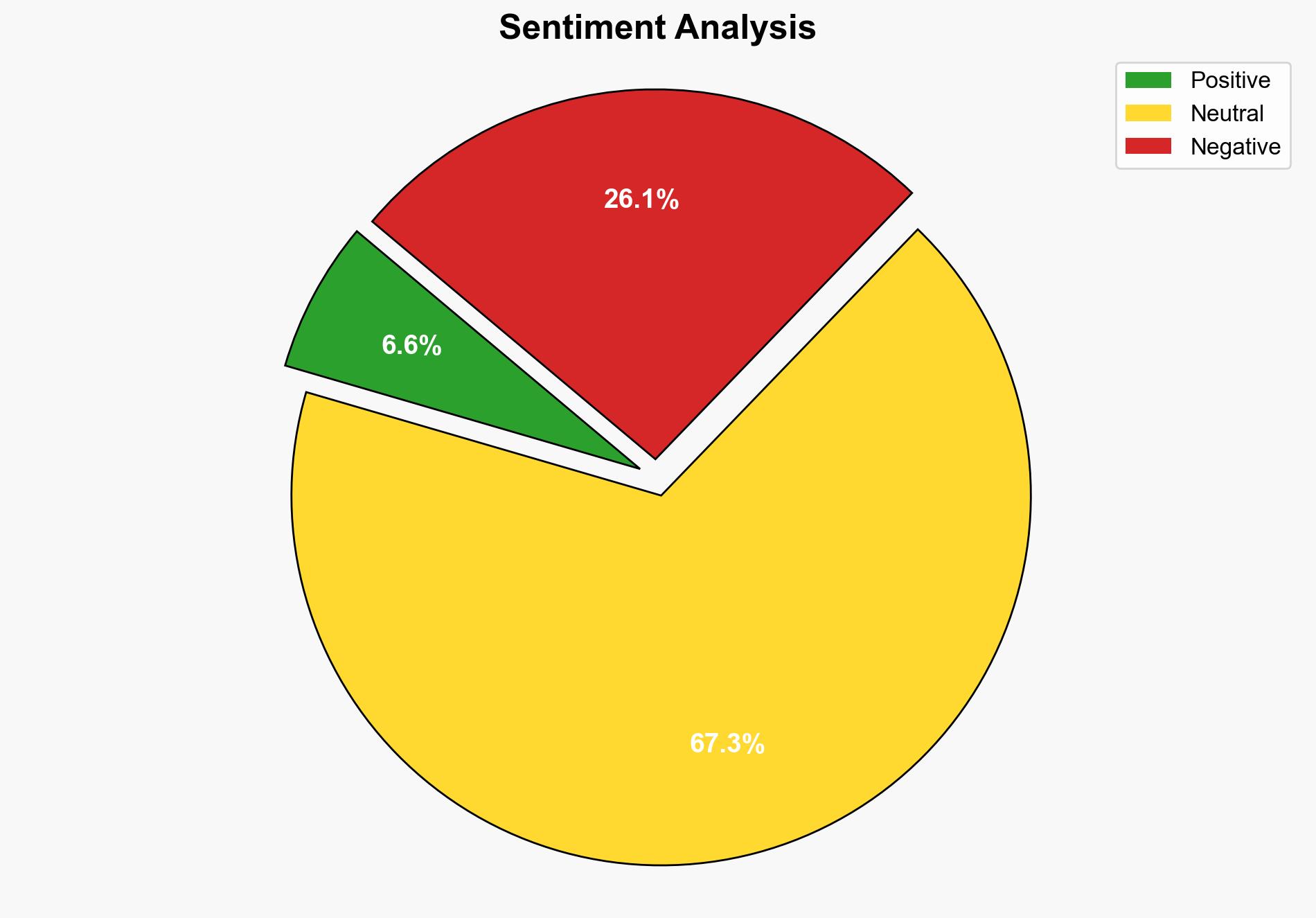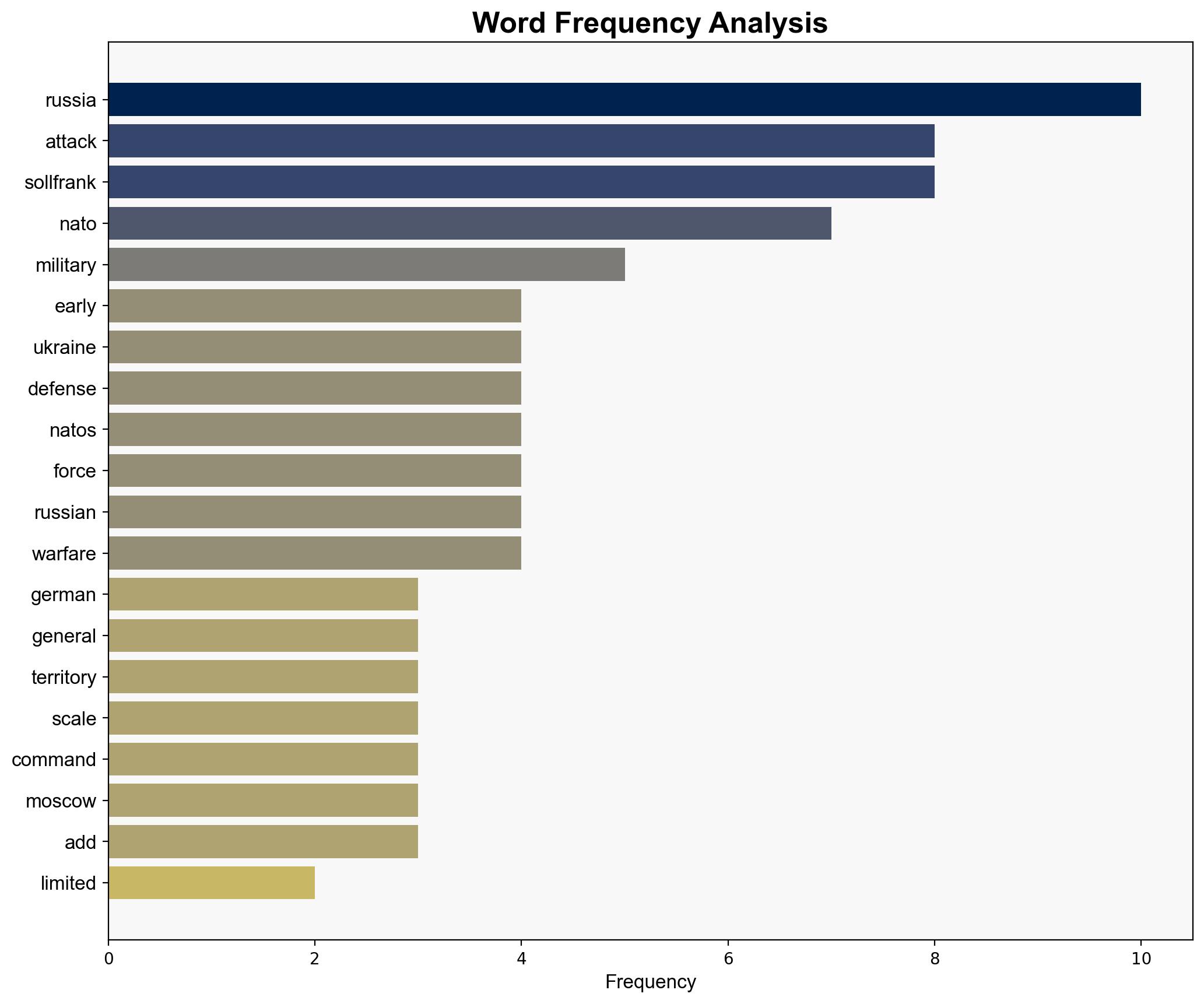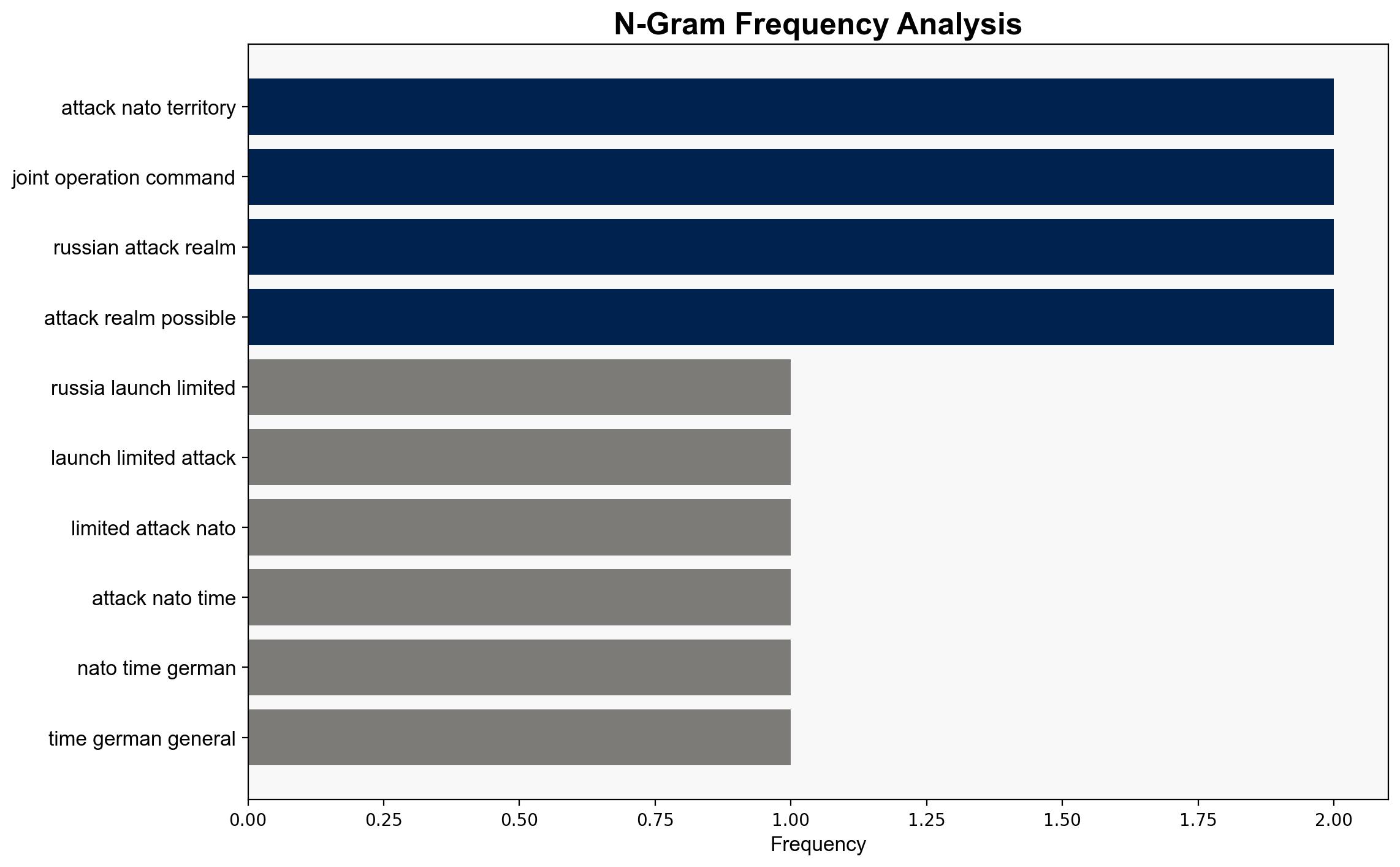Russia could launch limited attack on NATO any time German general says – New York Post
Published on: 2025-11-07
Intelligence Report: Russia could launch limited attack on NATO any time German general says – New York Post
1. BLUF (Bottom Line Up Front)
The most supported hypothesis is that Russia is posturing to test NATO’s resolve through limited military actions, leveraging hybrid warfare tactics to create strategic ambiguity and psychological pressure. Confidence in this assessment is moderate due to the complexity of the geopolitical environment and the potential for misinterpretation of signals. Recommended action includes enhancing NATO’s deterrence posture and increasing intelligence-sharing among member states.
2. Competing Hypotheses
1. **Hypothesis A**: Russia is preparing for a limited military engagement with NATO to test alliance cohesion and response capabilities. This would involve small-scale, regionally confined operations, possibly leveraging hybrid warfare tactics.
2. **Hypothesis B**: Russia’s current military posturing is primarily defensive, aimed at deterring NATO expansion and maintaining internal stability rather than initiating direct conflict with NATO forces.
Using Analysis of Competing Hypotheses (ACH), Hypothesis A is better supported by the intelligence. The presence of recent drone incursions into Polish airspace and the ongoing military buildup suggest a strategy of testing NATO’s defenses and response times.
3. Key Assumptions and Red Flags
– **Assumptions**: It is assumed that Russia’s military actions are directly correlated with its strategic objectives against NATO. Another assumption is that NATO’s response will be unified and decisive.
– **Red Flags**: The potential for misinterpretation of Russia’s military movements as aggressive rather than defensive. The possibility of internal Russian political dynamics influencing military decisions unpredictably.
– **Blind Spots**: Limited visibility into Russia’s internal decision-making processes and the potential influence of non-state actors in escalating tensions.
4. Implications and Strategic Risks
– **Escalation Risk**: A limited attack could escalate into a broader conflict if mismanaged, drawing in multiple NATO member states.
– **Economic Impact**: Increased defense spending by NATO countries could strain national budgets, impacting economic stability.
– **Cyber Threats**: Potential for cyber operations to accompany military actions, targeting critical infrastructure in NATO countries.
– **Geopolitical Dynamics**: A limited conflict could shift alliances and power balances, particularly in Eastern Europe.
5. Recommendations and Outlook
- Enhance NATO’s rapid response capabilities and conduct joint exercises to demonstrate readiness.
- Increase intelligence-sharing among NATO members to improve situational awareness and reduce the risk of miscalculation.
- Engage in diplomatic efforts to de-escalate tensions, possibly through back-channel communications with Russian counterparts.
- Scenario Projections:
- **Best Case**: Diplomatic engagement leads to de-escalation and a reduction in military posturing.
- **Worst Case**: Misinterpretation of military movements leads to a broader conflict involving multiple NATO states.
- **Most Likely**: Continued low-level provocations and hybrid warfare tactics without full-scale conflict.
6. Key Individuals and Entities
– Alexander Sollfrank
– Vladimir Putin
7. Thematic Tags
national security threats, cybersecurity, counter-terrorism, regional focus





